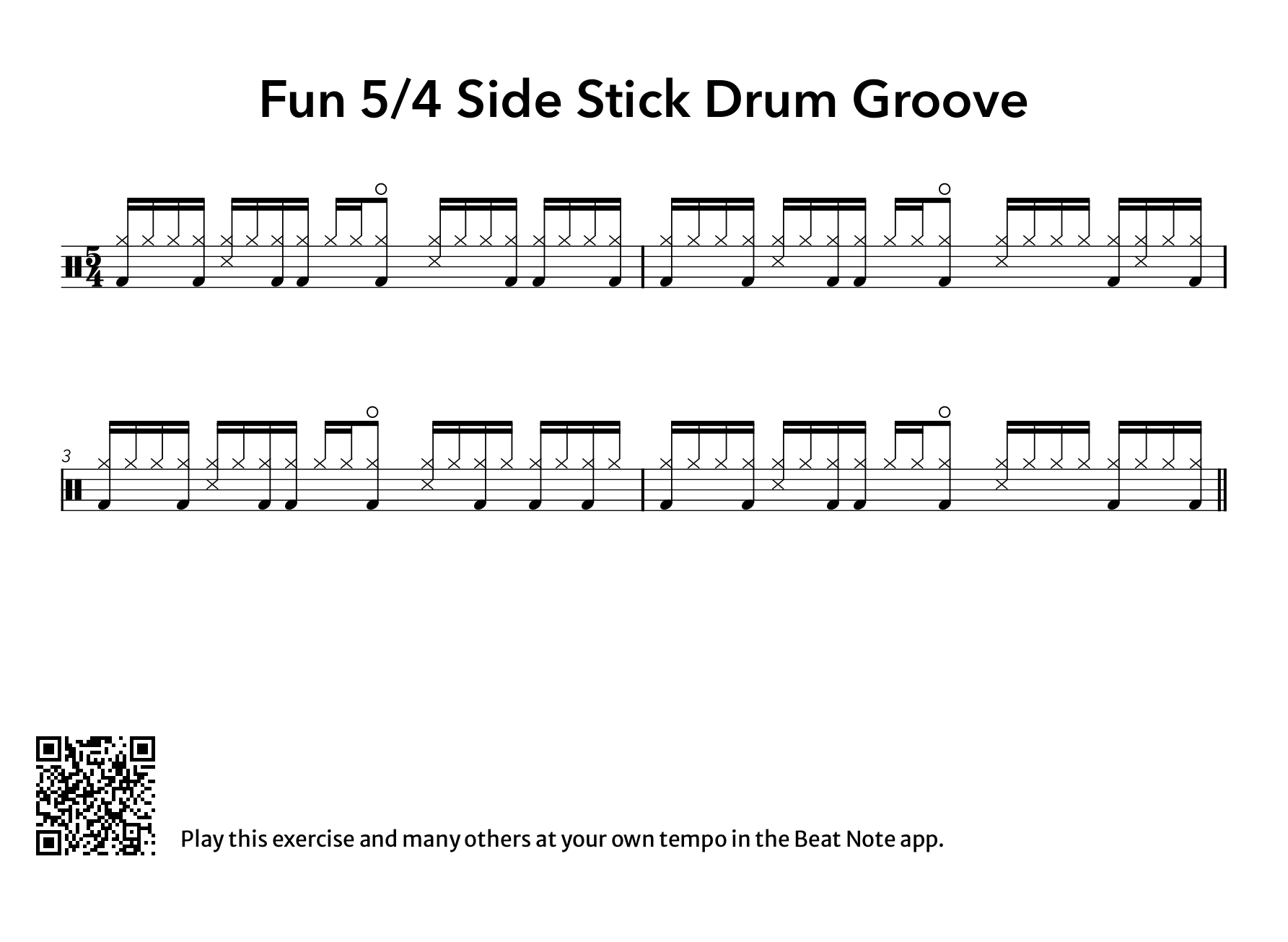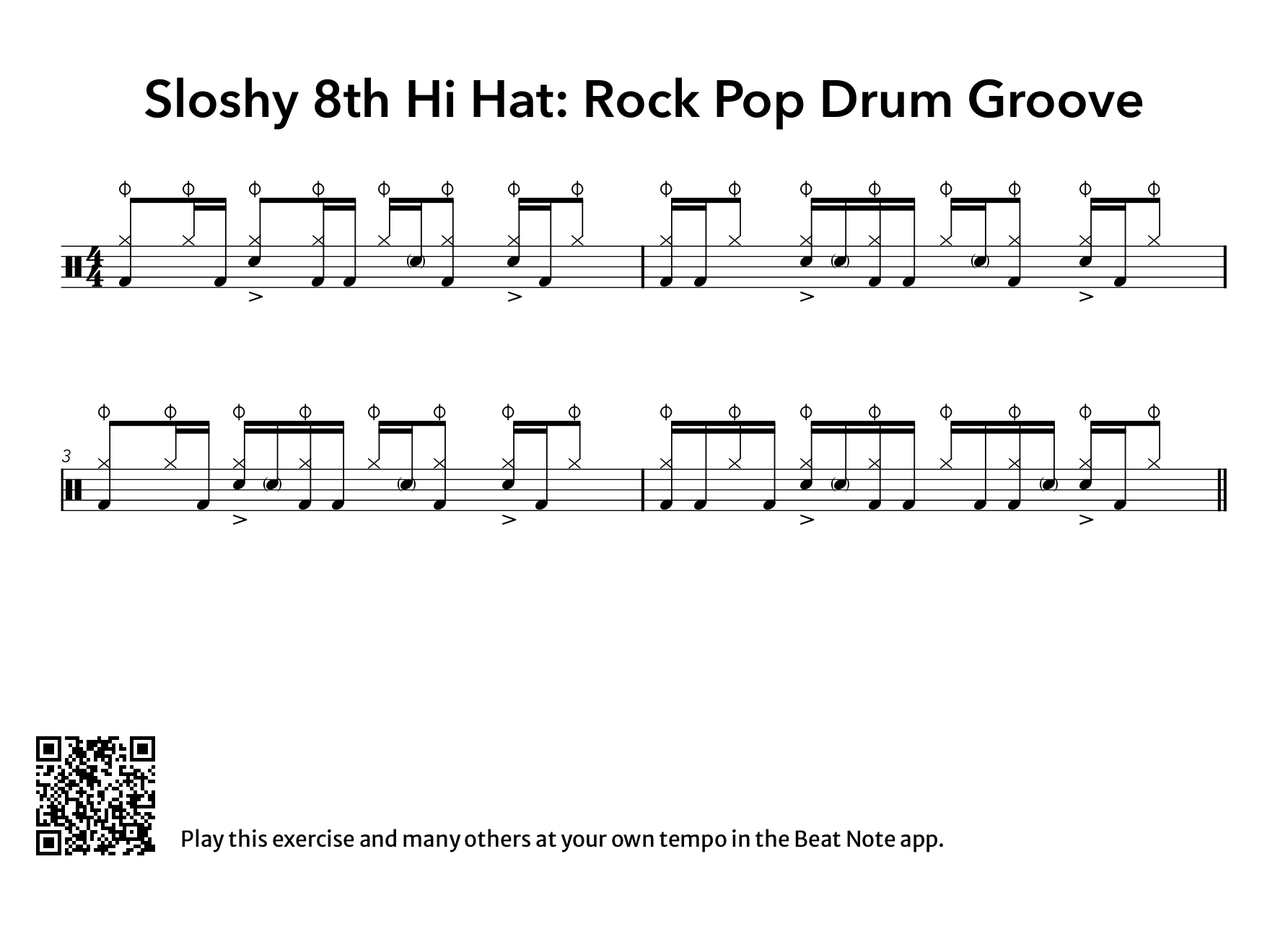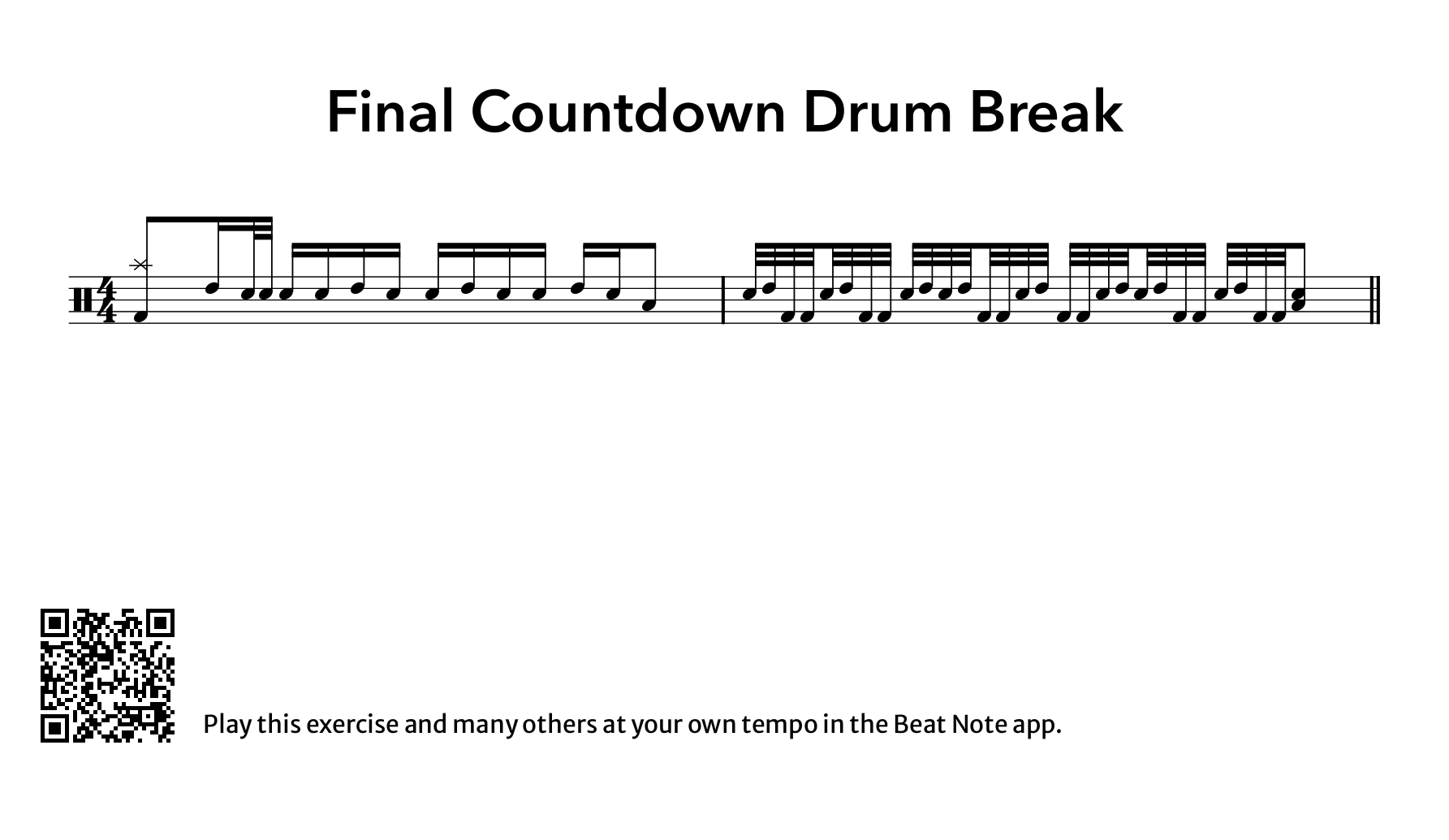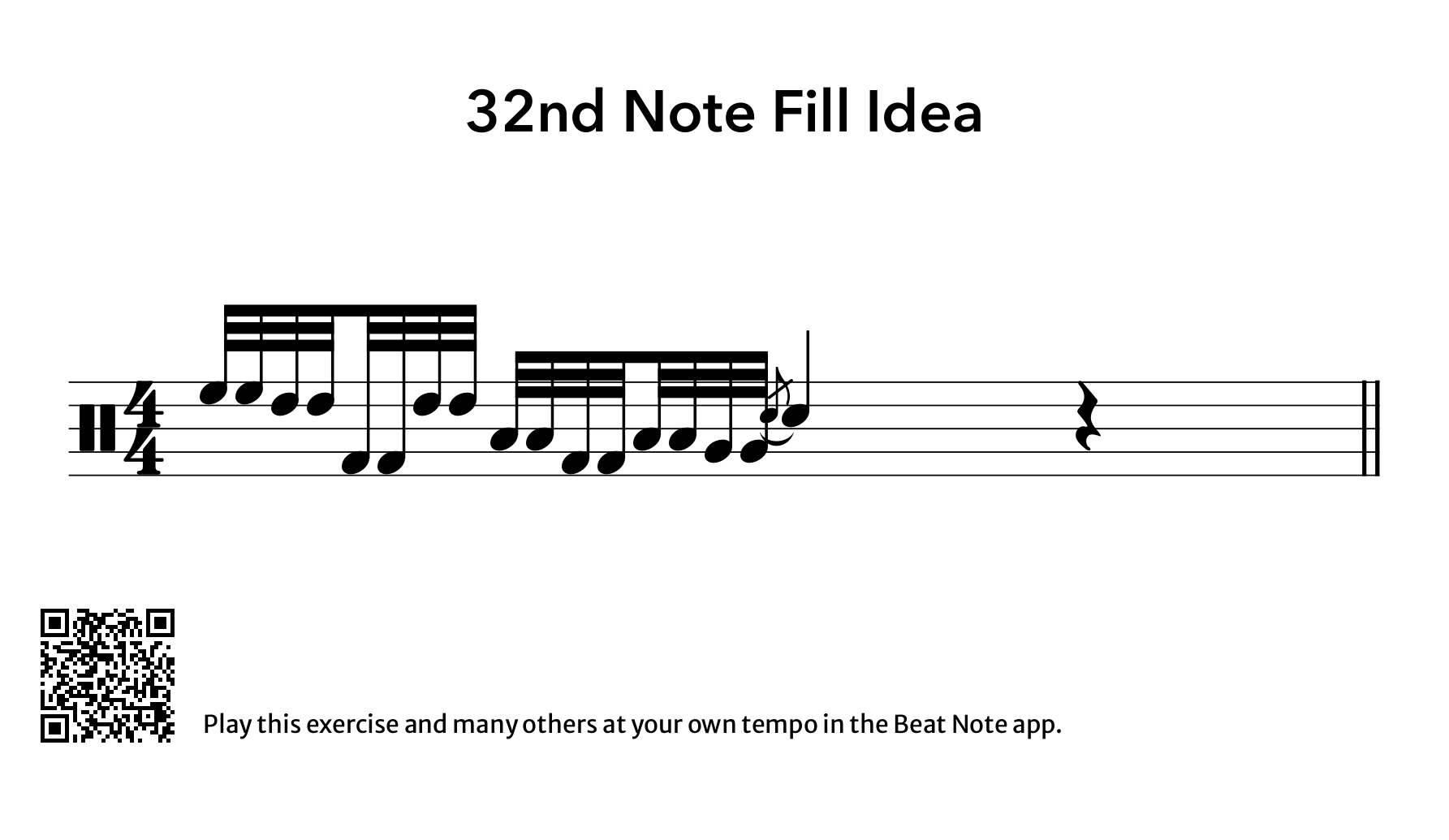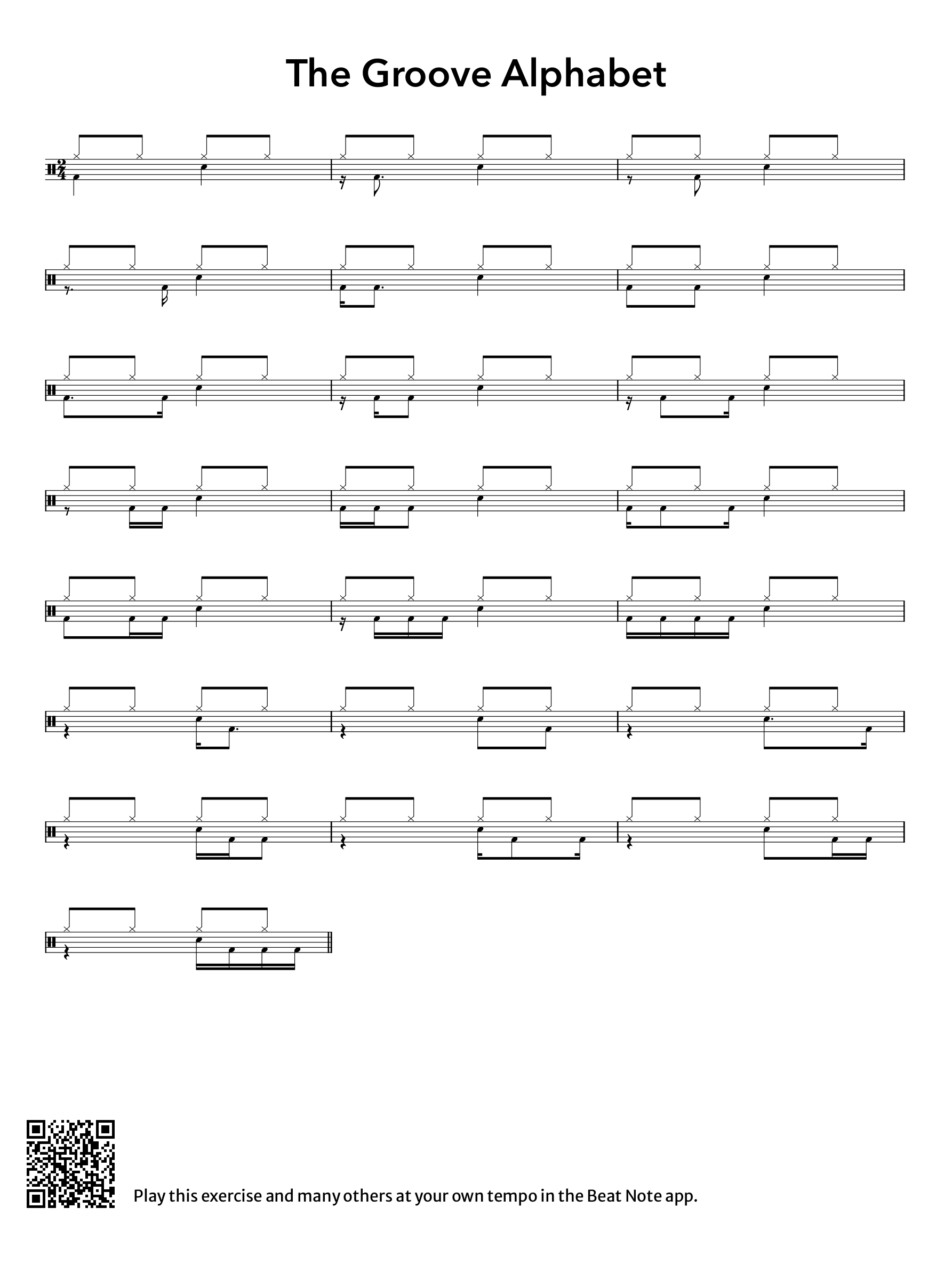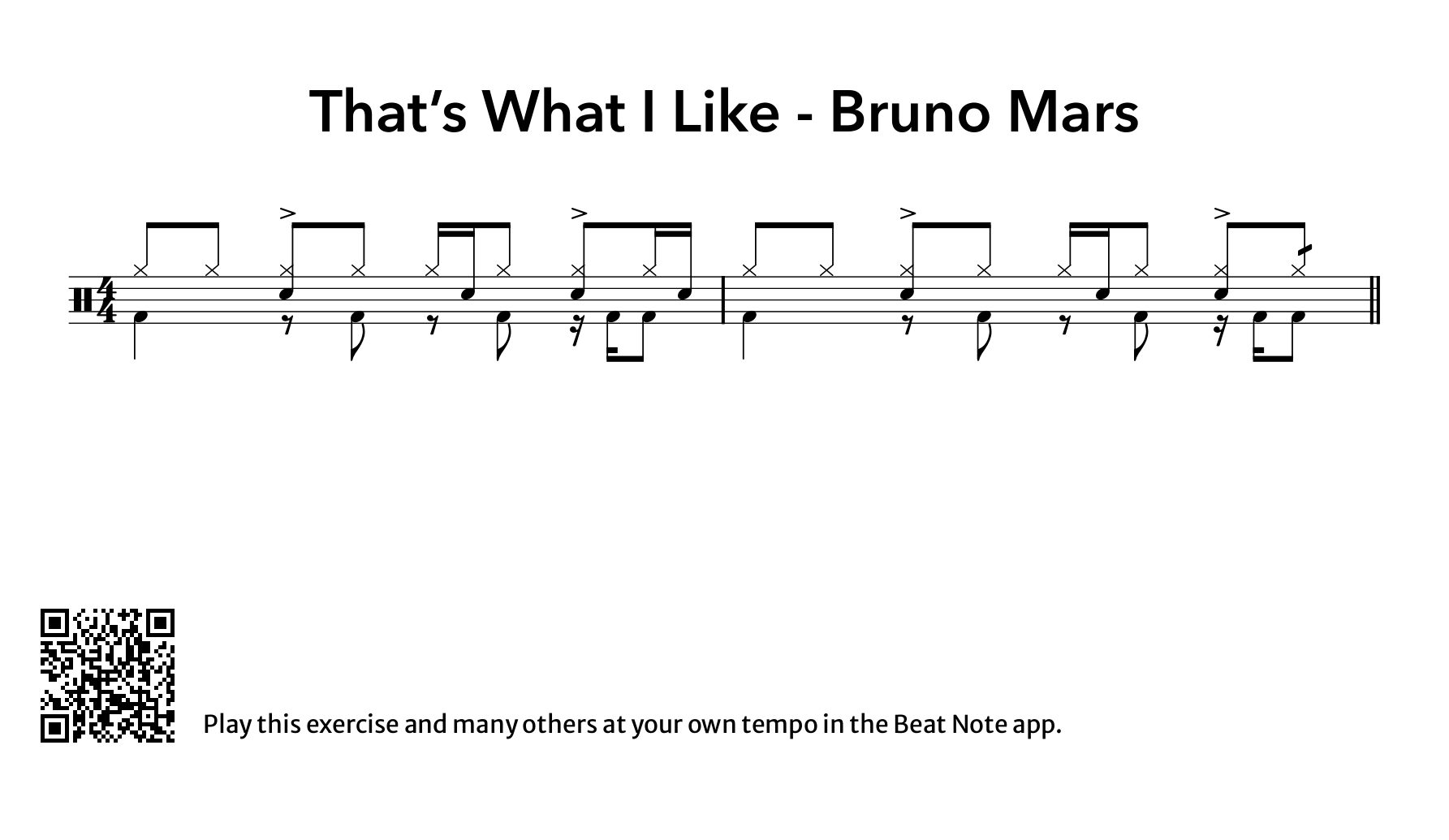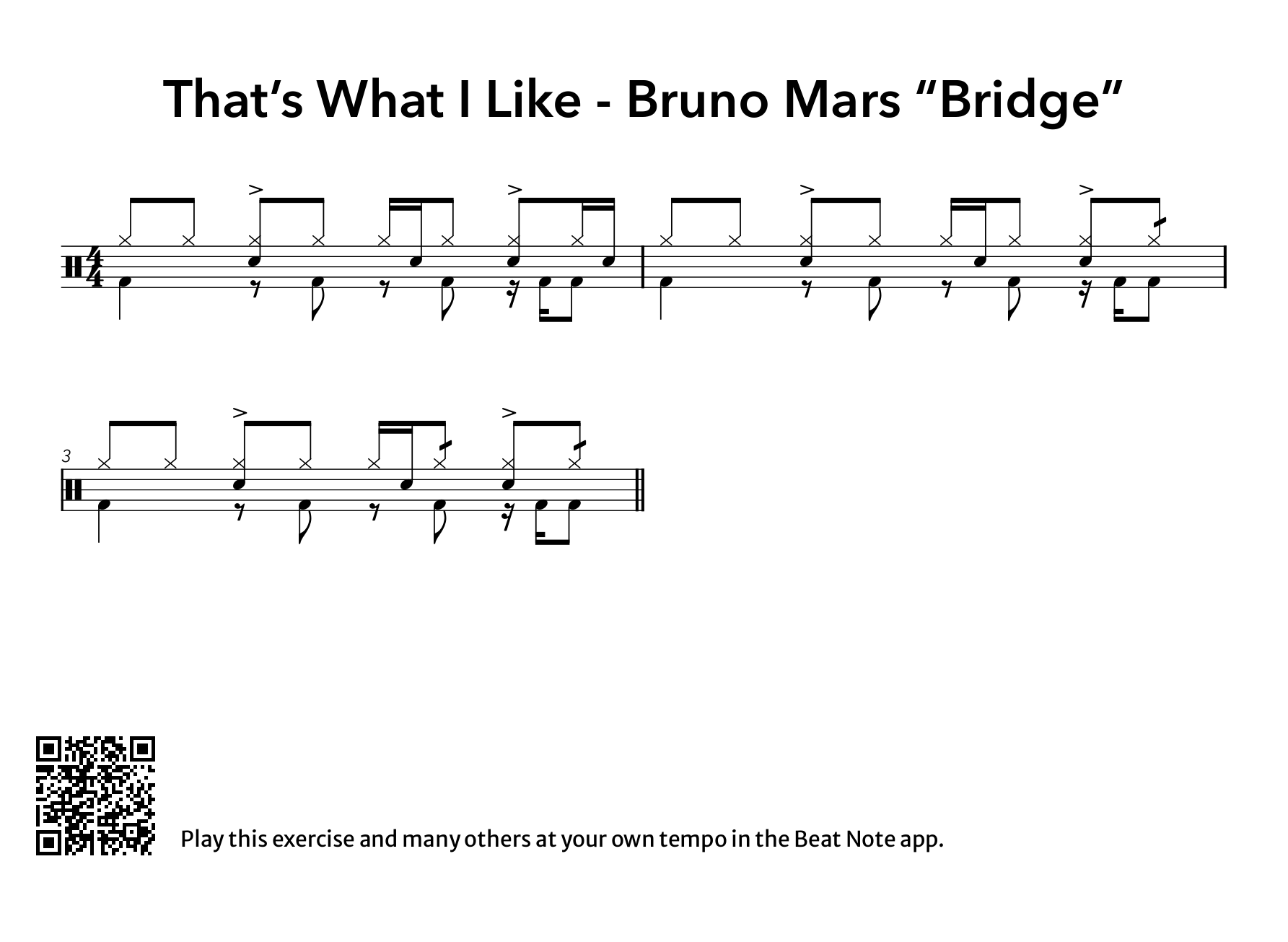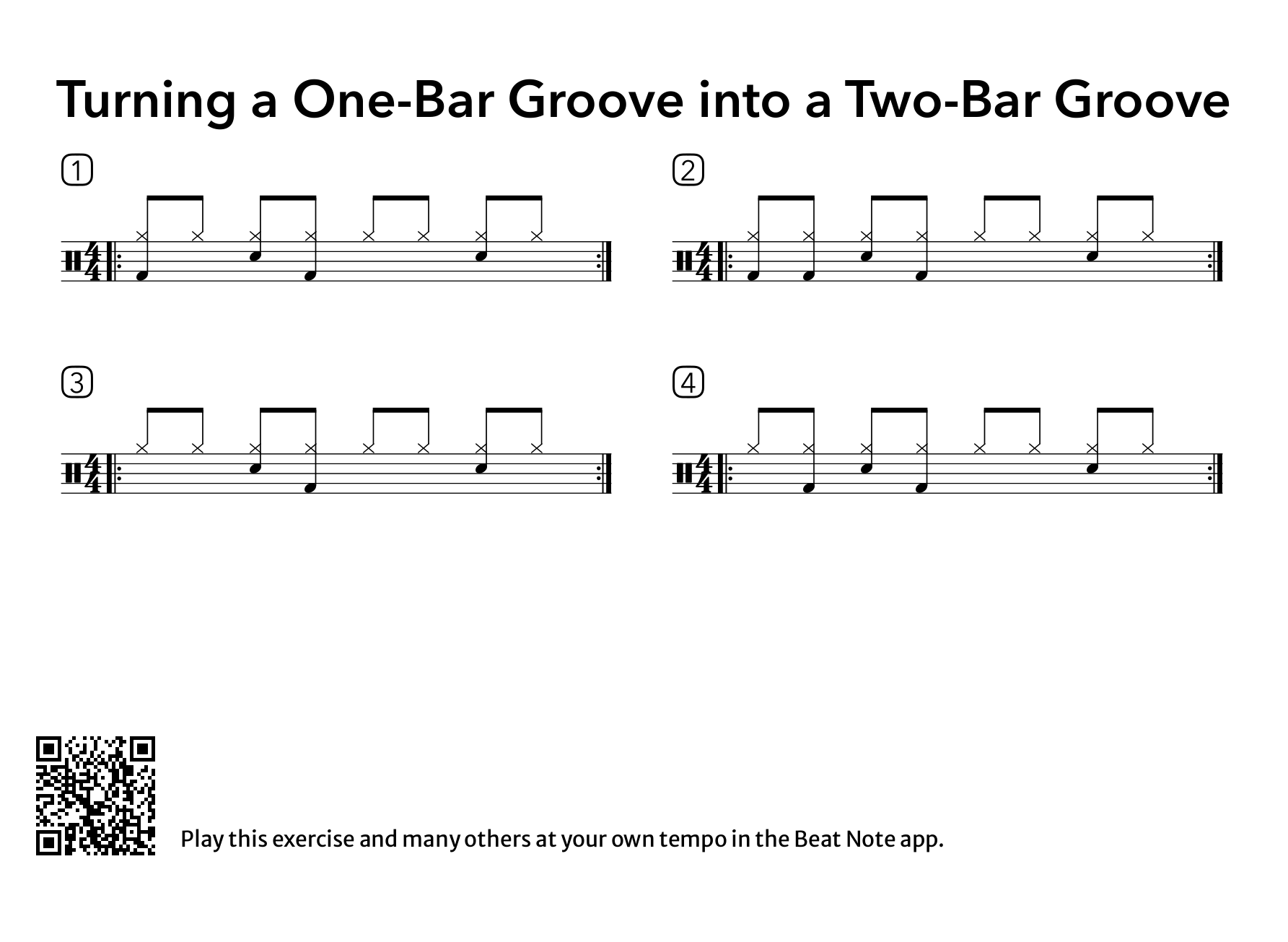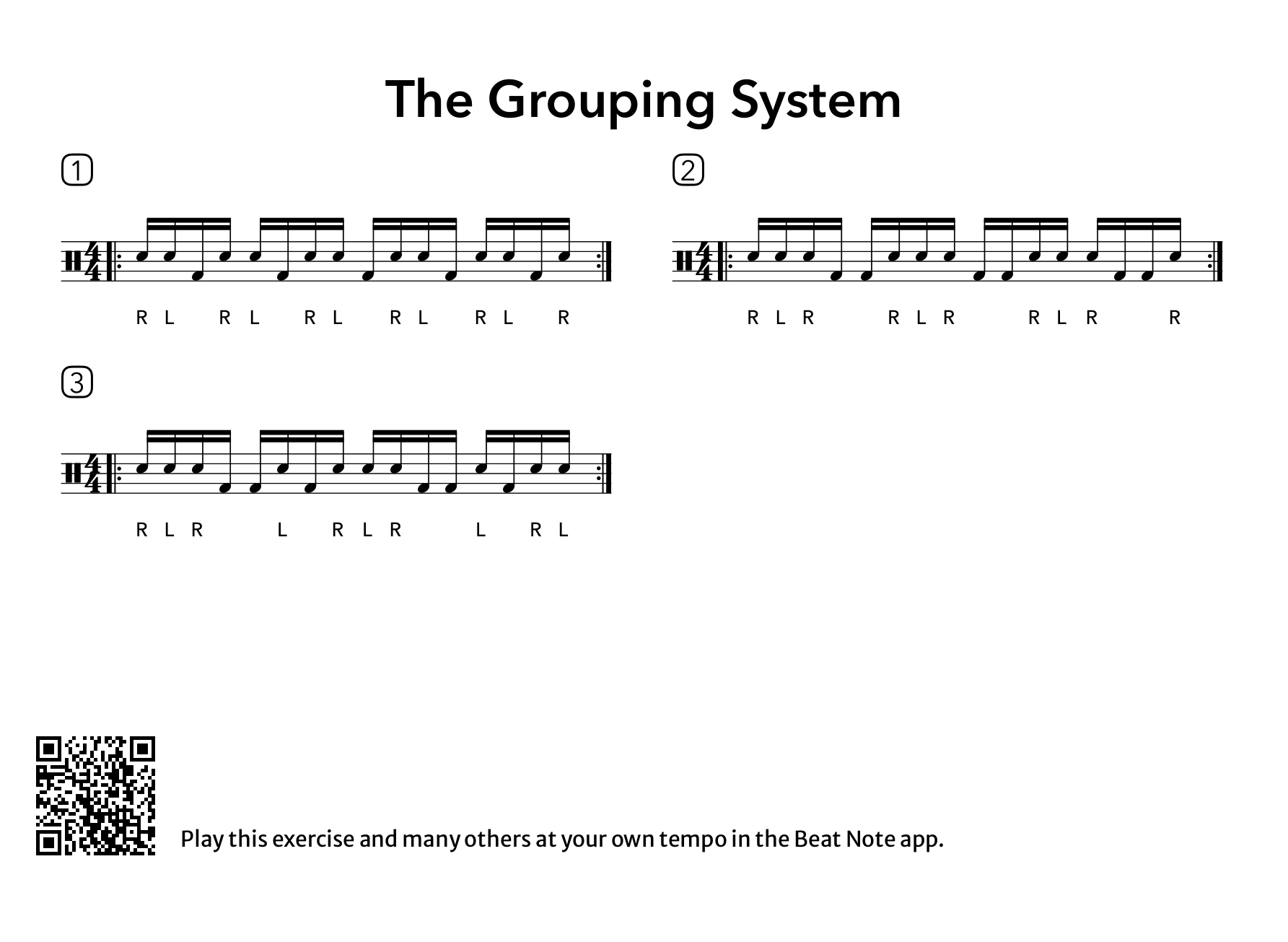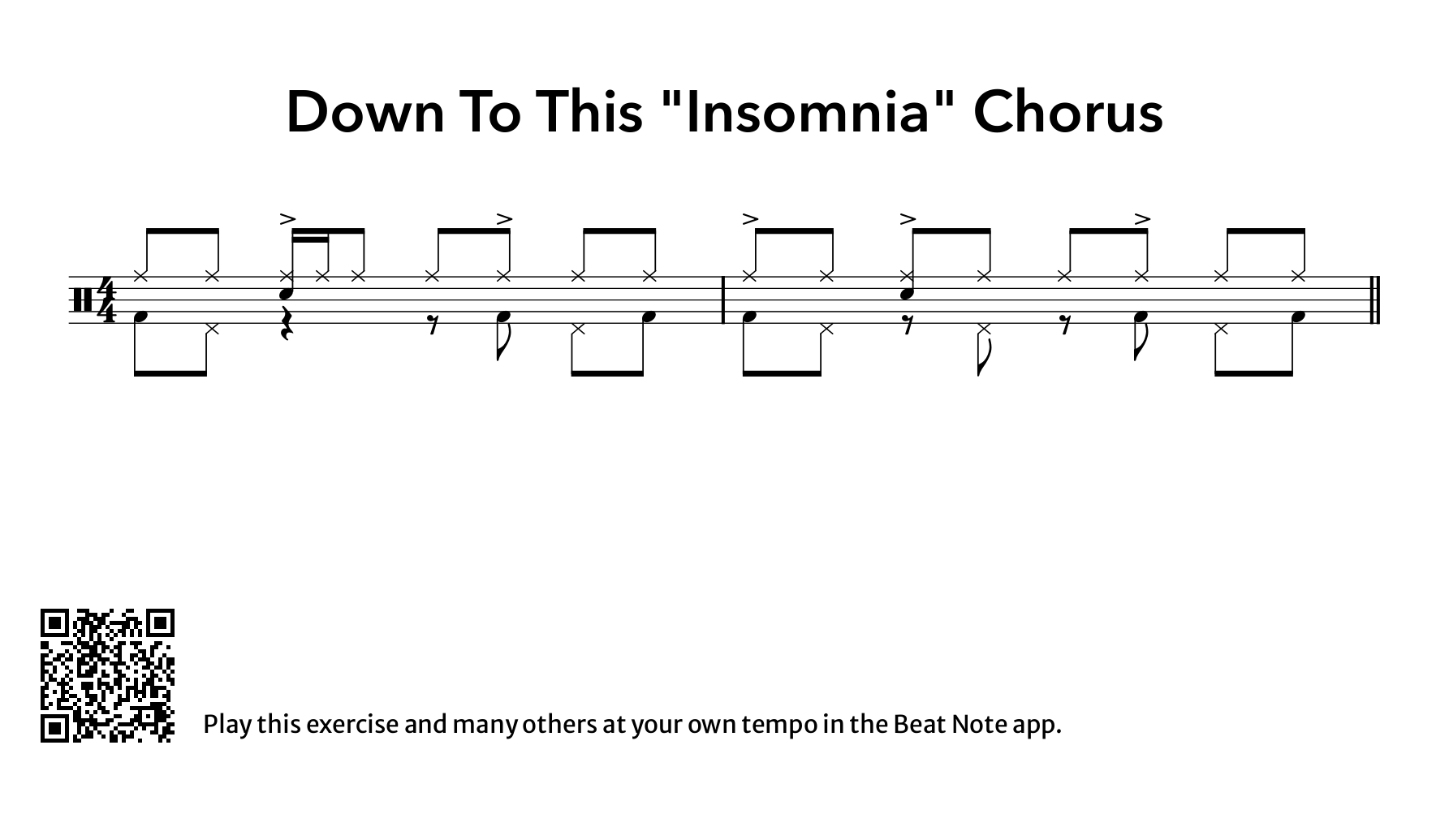Today, we’re spotlighting some of the coolest grooves, fills, and exercises from our first talented cohort of content creators. Whether you’re a seasoned drummer or just picking up the sticks, these beats will inspire and challenge you. I’m excited to share these hand-picked gems that showcase the creativity and skill of our community. So, grab your drumsticks, fire up Drum Notation by Beat Note, and let’s get grooving!
- Zak Bond
- Brandon Khoo
- Michael Czimback
- Kevin Jimenez
- Ross Farley
- Eddie Van Dongen
- Victor Valera
- Dave Kobrehel
- Koen Herfst
- Derek Lee

Zak Bond
Zak Bond views drumming education as a lifelong pursuit where persistence and enjoyment are key. He prioritizes efficiency, focusing on ergonomic motion, injury prevention, technical fundamentals, sound development, and emotional expression. In his approach, Zak emphasizes the importance of developing a solid feel, driving a band, ensemble listening, quick charting, and consistent listening habits. Using tools like Drum Notation by Beat Note for rhythm training, Zak underscores the importance of the right tools for effective learning and development.
Fun 5/4 Side Stick Drum Groove
Transcribing other players is always beneficial, but have you ever thought about transcribing your own playing? Try this: hit record on your device, sit down and improvise a 4 bar groove, then use Drum Notation by Beat Note to transcribe.
Fun 5/4 Side Stick Drum Groove
Transcribing other players is always beneficial, but have you ever thought about transcribing your own playing? Try this: hit record on your device, sit down and improvise a 4 bar groove, then use Drum Notation by Beat Note to transcribe.
Open Fun 5/4 Side Stick Drum Groove in Drum Notation by Beat Note to change the tempo
Sloshy 8th Hi Hat: Rock Pop Drum Groove
Sometimes the simplest of grooves are the perfect addition to a track. The vibe of what you play determines how things will ultimately feel to a listener. Here I improvised a 4 bar phrase then created music around it.
Sloshy 8th Hi Hat: Rock Pop Drum Groove
Sometimes the simplest of grooves are the perfect addition to a track. The vibe of what you play determines how things will ultimately feel to a listener. Here I improvised a 4 bar phrase then created music around it.
Open Sloshy 8th Hi Hat: Rock Pop Drum Groove in Drum Notation by Beat Note to change the tempo
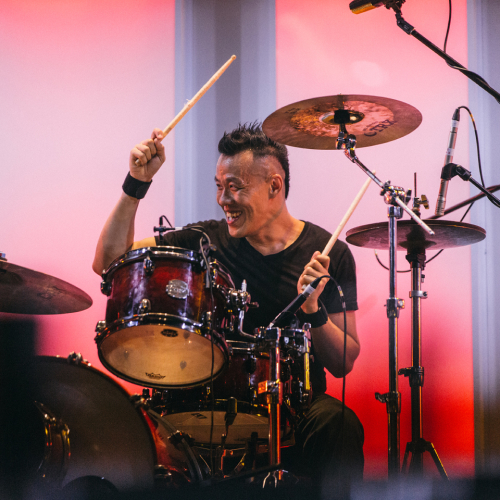
Brandon Khoo
Brandon Khoo, a renowned drummer from Singapore, grew up in a musical household that laid the foundation for his passion for drumming. He focuses on a comprehensive teaching approach that emphasizes technique, groove, and musicality. Known for his distinctive educational style, Khoo caters to both beginners and advanced students, helping them reach their full potential. His infectious smile, engaging personality, and innovative methods have made him especially popular among young learners. Khoo’s ability to break down complex concepts into understandable segments, along with his live streaming sessions, has earned him a dedicated following and a reputation as a leading figure in drumming education.
Final Countdown Drum Break
Let’s break down Ian Haugland’s iconic drum break leading into the guitar solo for Europe’s hit "The Final Countdown"!
Final Countdown Drum Break
Let’s break down Ian Haugland’s iconic drum break leading into the guitar solo for Europe’s hit “The Final Countdown”!
Open Final Countdown Drum Break in Drum Notation by Beat Note to change the tempo
32nd Note Fill Idea
This simple (but not easy!) fill pattern mixing hands and feet in the 32nd note subdivision could be used in a variety of rock contexts, like a pre-guitar solo fill or a pre-chorus into a chorus. Explore different voicings around the kit to see how it flows!
32nd Note Fill Idea
This simple (but not easy!) fill pattern mixing hands and feet in the 32nd note subdivision could be used in a variety of rock contexts, like a pre-guitar solo fill or a pre-chorus into a chorus. Explore different voicings around the kit to see how it flows!
Open 32nd Note Fill Idea in Drum Notation by Beat Note to change the tempo
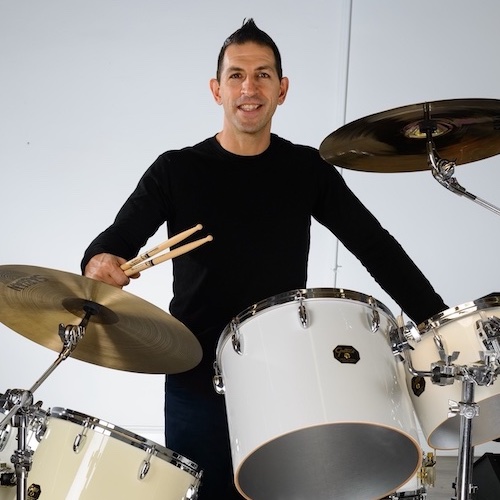
Michael Czimback
Michael Czimback’s unique teaching style is centered around simplifying complex drumming concepts to make them easily understandable. He focuses on building a strong foundational vocabulary through his Rhythmic Evolution Library and Groove Alphabet, which guide students from basic to complex rhythms. His method emphasizes practical, hands-on learning and fosters a supportive community through bi-weekly group drum pad classes and playing classes with his band. Michael’s approach is designed to inspire creativity and growth in a fun and engaging environment.
The Groove Alphabet
The Groove Alphabet, as taught to me by Gary Chaffee, consists of 2-beat measures and guides you through every rhythm played on the bass drum with the snare on beat 2, accompanied by 8th notes on the hi-hat. Once you can play any of these 120 musical phrases, you can move to the improvisational application by combining phrases to create your own bass drum/snare melodies. Eventually, you can add ghost notes and embellishments to develop your own grooves. Mastering this skill adds significant value in any musical situation!
The Groove Alphabet
The Groove Alphabet, as taught to me by Gary Chaffee, consists of 2-beat measures and guides you through every rhythm played on the bass drum with the snare on beat 2, accompanied by 8th notes on the hi-hat. Once you can play any of these 120 musical phrases, you can move to the improvisational application by combining phrases to create your own bass drum/snare melodies. Eventually, you can add ghost notes and embellishments to develop your own grooves. Mastering this skill adds significant value in any musical situation!
Open The Groove Alphabet in Drum Notation by Beat Note to change the tempo
Paradiddle Diddle and a Half
The Paradiddle Diddle and a Half is an exercise that I love for many reasons! It helps you alternate Paradiddle Diddles, which are a non-alternating 6-note sticking pattern, while playing those 6-note groupings over a non-matching subdivision. This means playing a 6-note phrase over 4 notes per beat (16ths), instead of the more common triplet subdivision where accents fall on the downbeat. This exercise encourages you to work on your weaker hand by alternating, while also learning how to play any note grouping in any subdivision or time signature.
Paradiddle Diddle and a Half
The Paradiddle Diddle and a Half is an exercise that I love for many reasons! It helps you alternate Paradiddle Diddles, which are a non-alternating 6-note sticking pattern, while playing those 6-note groupings over a non-matching subdivision. This means playing a 6-note phrase over 4 notes per beat (16ths), instead of the more common triplet subdivision where accents fall on the downbeat. This exercise encourages you to work on your weaker hand by alternating, while also learning how to play any note grouping in any subdivision or time signature.
Open Paradiddle Diddle and a Half in Drum Notation by Beat Note to change the tempo

Kevin Jimenez
Over the years, Kevin’s teaching approach has evolved. Initially, he used the methods taught by his own teachers. While somewhat effective, he encountered issues—students often got lost, lost motivation, and sometimes even quit. Kevin then began integrating his own methods, recognizing that some students learn best visually, others through listening, and some with a combination of both. He leverages these strengths and introduces new techniques gradually. Witnessing their growth keeps him passionate about teaching drums, ensuring it is both enjoyable and effective for everyone.
That’s What I Like - Bruno Mars
One of my students wanted to learn this song, which can be tricky to pick up by ear—it features a two-bar loop with snare syncopation and diddles on the hi-hats. Using the single-measure practice feature, my student was able to focus on mastering each part separately.
That’s What I Like - Bruno Mars
This song can be tricky to pick up by ear due to the two-bar loop with snare syncopation and diddles on the hi-hats. This beat uses the single-measure practice feature, allowing you to focus on mastering each part separately.
Open That’s What I Like - Bruno Mars in Drum Notation by Beat Note to change the tempo
That’s What I Like - Bruno Mars “Bridge”
When we reached the bridge section, I noticed it shifted to a 3-bar pattern. The third measure introduced additional diddles in the hi-hat section. Thanks to Beat Note, my student quickly mastered this using practice features like visual cues, looping, and audio playback on the app.
That’s What I Like - Bruno Mars "Bridge"
The bridge section shifts to a 3-bar pattern, with the third measure introducing additional diddles on the hi-hat.
Open That’s What I Like - Bruno Mars "Bridge" in Drum Notation by Beat Note to change the tempo

Ross Farley
Ross believes that playing drums is about making music. To become great drummers, we have to learn the language of drumming and apply it in a musical way. His approach helps students develop their drumming vocabulary while exploring different applications of these ideas. Ross emphasises creativity and expression, encouraging students to find their unique voice on the drums.
Turning a One-Bar Groove into a Two-Bar Groove
This is a great exercise that you can try with any one-bar groove to double its length and make it feel more musical. Repeating two bars of music is going to sound more interesting than repeating one!
First, we need a groove. See Groove #1 in the example. This is the first bar of our two-bar groove.
For the second bar, all we’re going to do is add another bass drum on the “+” of beat 1, so it will start with two bass drums rather than one. See Exercise #2 in the example.
Now we just need to practice switching between the two bars. Play #1, then play #2, then back to #1 again, and keep switching. That’s it!
Alternatively, you could remove the bass drum on beat 1; see #3 in the example. Practice playing #3, then try switching between #1 and #3.
Or you could move the bass drum as I did in Example #4. Practice playing #4, and then try switching between #1 and #4.
Once you can play the examples, try doing the same thing to another groove you know.
Happy practicing!
Turning a One-Bar Groove into a Two-Bar Groove
To make a one-bar groove more interesting, you can extend it into a two-bar sequence. This involves creating a variation for the second bar, such as adding or moving a bass drum note. Practice switching between the original and the modified bars. Once comfortable, apply this technique to other grooves to enhance their musicality.
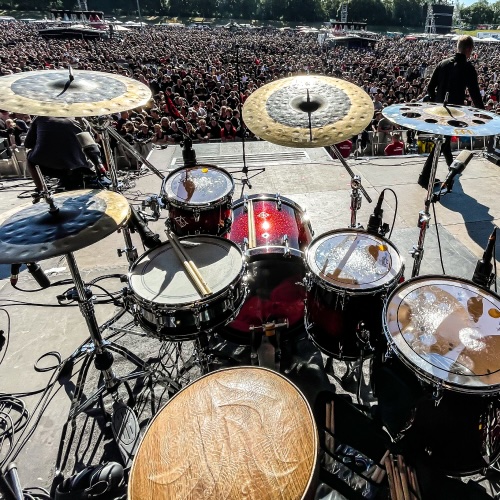
Eddie Van Dongen
Eddie the DrumCoach finds his passion in helping drummers break free from repetitive fills and grooves to discover their unique style. He believes that mastering the basics—singles, doubles, and paradiddles—is crucial, as they form the backbone of everything drummers play. When these rudiments are creatively applied around the drumkit, they unlock limitless possibilities. Combining this foundation with his unique grouping system, Eddie offers a comprehensive method that emphasizes how you play, not just what you play. His goal is to help every drummer find the musical magic in their playing and express themselves effortlessly.
Paradiddle Grooves
Learning to apply your paradiddles into grooves and fills musically is essential to develop your drumming. When you stop seeing the paradiddle as JUST an exercise or JUST a warm-up and start to see it as a musical tool, a phrase that can be used anywhere, anytime, THEN you will be able to truly apply it around the drumkit.
In these 4 grooves you will find the 4 basic paradiddles applied as a groove. This is the tip of the iceberg. When you are ready to truly learn the framework behind this magical rudiment, you will find everything you need in my Paradiddle Blueprint Online Course!
Paradiddle Grooves
Learning to apply your paradiddles into grooves and fills musically is essential to develop your drumming. When you stop seeing the paradiddle as JUST an exercise or JUST a warm-up and start to see it as a musical tool, a phrase that can be used anywhere, anytime, THEN you will be able to truly apply it around the drumkit. In these 4 grooves you will find the 4 basic paradiddles applied as a groove. This is the tip of the iceberg.
Open Paradiddle Grooves in Drum Notation by Beat Note to change the tempo
The Grouping System
Breaking free from the standard 4 blocks of four 16th notes is key to playing more creative, expressive, and effortless fills. Understand that these 4x4 blocks are 16 notes in total, and you have the freedom to choose how to divide them.
Stop copying random fills and start creating your own with The Grouping System. Playing groups of 3, 5, and 7 in 16th notes will transform your drumming.
The fills are written as snare drum and kick patterns, but by adding dynamics and moving your hands around the kit, you’ll unlock thousands of fill possibilities!
The Grouping System
Breaking free from the standard 4 blocks of four 16th notes is key to playing more creative and expressive fills. By understanding that these blocks are 16 notes you can divide any way, you can start creating your own fills with The Grouping System. Playing groups of 3, 5, and 7 in 16th notes will transform your drumming. These fills, initially written as snare drum and kick patterns, can be expanded by adding dynamics and moving around the kit, unlocking thousands of possibilities.
Open The Grouping System in Drum Notation by Beat Note to change the tempo
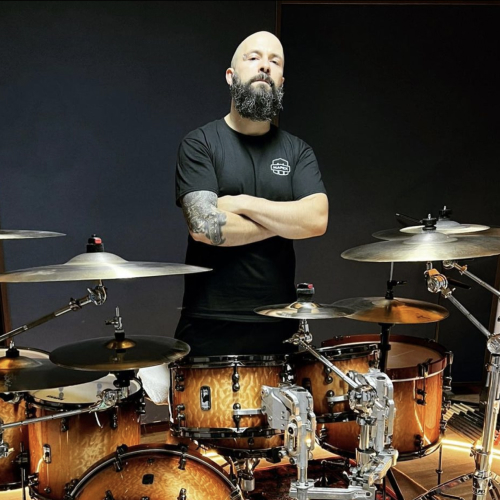
Victor Valera
Victor’s journey began in 2010 when he left his job and daily life to embark on a musical adventure with his thrash metal band, Angelus Apatrida. Traveling the world and experiencing diverse cultures and musical influences, this global journey inspired him to start teaching drums. As a self-taught musician, he quickly realized the importance of focusing on how to teach rather than just what to teach. Nearly 15 years later, this remains his guiding principle.
Victor’s mission is to teach the fundamental aspects of drumming, allowing each student to choose their own path and develop their unique style. His teaching is built on the pillars of groove, independence, fluidity, and balance on the drum set.
Approach to 4-Way Coordination
Independence and balance are essential for good control of the instrument, so here are a couple of exercises to practice at different speeds. These exercises can be played independently or combined for added complexity. I suggest keeping the sticking but moving it around the drums anywhere in the set.
Doubling some notes can be interesting because it sparks creativity and allows for experimentation with musical expression. This exercise is not just meant to be played as written but to inspire you to explore and develop your own variations. Try incorporating doubles with some random notes, first with your hands. For a bigger challenge, you can also start doubling with your feet. Enjoy!
Approach to 4-Way Coordination
Independence and balance are essential for good control of the instrument, so here are a couple of exercises to practice at different speeds. These can be played independently or combined, with sticking moved around the set. Doubling some notes sparks creativity and allows for experimentation with musical expression. This exercise inspires you to explore and develop your own variations. Try incorporating doubles with your hands, and for a bigger challenge, with your feet.
Open Approach to 4-Way Coordination in Drum Notation by Beat Note to change the tempo

Dave Kobrehel
For Dave, drumming is more than just playing—it’s a way of communicating and sharing his passion. He believes we can make the world better through music and drumming. Dave expresses his love for drumming through his magazine, JazzDrummerWorld, and by sharing grooves on Instagram, which is a constant source of inspiration for him. At his drum school, Keep the Beat, he finds joy in teaching, sharing ideas, and inspiring his students.
Funky Beat #1
Funky Beat #1
A Stanton More inspired Drum Beat.
Open Funky Beat #1 in Drum Notation by Beat Note to change the tempo
Funky Beat #2
Funky Beat #2
A cool Beat that works slow or fast. Fast its more like a Jojo Mayer Groove
Open Funky Beat #2 in Drum Notation by Beat Note to change the tempo

Koen Herfst
Koen Herfst emphasizes practical, to-the-point lessons to help students excel in various musical genres, including metal, rock, pop, drum and bass, and prog. His teaching approach focuses on the essentials of drumming: groove, sound, speed, dynamics, and power. Koen avoids overly complicated techniques, instead providing examples of fills he frequently uses and encouraging students to create their own variations. He prioritizes the importance of groove and sound in band settings, ensuring students can play effectively and musically within a group. Koen’s practical lessons are designed to be immediately applicable, fostering creativity and personal expression while helping drummers become versatile and confident in any genre.
Groups of 5 with Incorporated Hi-Hat
I like to incorporate my hi-hat in fills like in this example. It’s a pattern of 5 (RLRKK) played three times, which makes 15 16th notes, so just add one more note to make it 16!
Groups of 5 with Incorporated Hi-Hat
I like to incorporate my hi-hat in fills like in this example. It’s a pattern of 5 (RLRKK) played three times, which makes 15 16th notes, so just add one more note to make it 16!
Open Groups of 5 with Incorporated Hi-Hat in Drum Notation by Beat Note to change the tempo
Groups of 6 and 3
I love to play around with sextuplets and triplets between kick, floor tom and snare drum like in this example. Make sure to really make the difference between ghost and accents on the snare!
Groups of 6 and 3
I love to play around with sextuplets and triplets between kick, floor tom and snare drum like in this example. Make sure to really make the difference between ghost and accents on the snare!
Open Groups of 6 and 3 in Drum Notation by Beat Note to change the tempo

Derek Lee
My passion for drumming drives my motivation to enhance drumming education through technology and innovation. I believe that exposure to diverse artists, genres, and musical influences helps us develop our unique style and voice on the drums. By leveraging technology, we can gain more inspiration and structure, allowing us to focus on honing our craft while the technological support seamlessly fades into the background.
Uni-Lateral Flam Accents
This is an exercise I was taught when I marched drum and bugle corps as a way to build the chops necessary to burn through flam accents.
The primary exercise is a two-measure pattern of flam accents mixed with flams and flam taps. Once you get the pattern down it will start to groove.
Next, we break the pattern down unilaterally and focus on isolating the right hand, revealing an underlying triple-stroke pattern needed to play the flam accents.
Again we repeat the primary flam accent pattern motif to check ourselves before finally isolating the left hand, showing the underlying complexity of unaccented double and triple strokes needed to play the flam accents with this limb.
Lastly, because the grace note of a flam is played ever-so-slightly before the primary note, it’s important to be extra aware of the timing as the position of the grace note is going to be slightly different depending on whether you’re playing both hands together or each hand unilaterally.
I recommend practicing this exercise leading with both your dominant and non-dominant hands and focusing on the dynamics of the notes, starting slow and building up speed over time.
Uni-Lateral Flam Accents
This exercise builds the chops necessary for flam accents through a two-measure pattern of flam accents, flams, and flam taps. By breaking down the pattern unilaterally, it reveals the underlying triple-stroke and double/triple stroke patterns needed. The grace note timing is crucial, as it varies slightly whether played with both hands or unilaterally. Practicing with both dominant and non-dominant hands while focusing on dynamics is recommended to master this exercise.
Open Uni-Lateral Flam Accents in Drum Notation by Beat Note to change the tempo
Incorporating the Stepped Hi-Hat Into A Groove
While it’s common to stomp out quarter notes or eighth notes on the hi-hat when playing the ride, bell, or crash, incorporating the stepped hi-hat as another voice in your grooves can add additional texture and interest when not played in such consistent and predictable patterns.
When I first heard the guitar part for the chorus of this song, my left foot naturally fell after the kick drum which lines up with the rhythm of the guitar. I played the following groove with the hard-rock band Down To This for the song “Insomnia”. While it’s a subtle effect in the mix behind the squealing guitars, I think it adds some forward momentum to the push-pull feel of the faux-halftime backbeat. The stepped hi-hat can be a great way to add a little extra momentum to your grooves.
Down To This "Insomnia" Chorus
Adding a stepped hi-hat as another voice in your grooves can create additional texture and interest, especially when used unpredictably. In the song “Insomnia” by Down To This, I aligned the kick drum to the guitar rhythm and followed it with a stepped hi-hat. This subtle effect adds forward momentum to the groove, enhancing the push-pull feel of this groove against the ride pattern and accents. Using a stepped hi-hat can be a great way to add momentum and complexity to your drumming.
Open Down To This "Insomnia" Chorus in Drum Notation by Beat Note to change the tempo
Wrapping Up
I hope you’ve enjoyed this rhythmic journey through the unique grooves, fills, and exercises from our incredible content creators. Each beat and exercise is a testament to their passion for drumming and education. Don’t forget to explore more content on Drum Notation by Beat Note, and keep practicing to unlock your full drumming potential.
We’d love to hear your thoughts and feedback! You can share your feedback directly in the app (Settings → Email Derek) or on the Beat Note roadmap. Your input helps us make the app even better for you. Stay tuned for more exciting features and updates, and as always, keep the beat alive!
